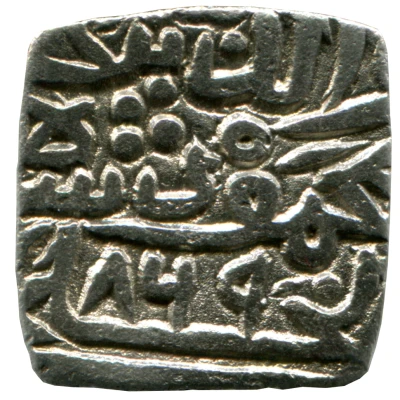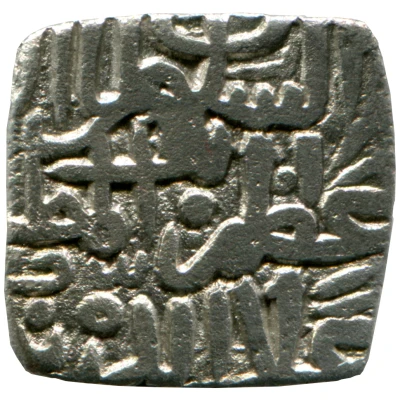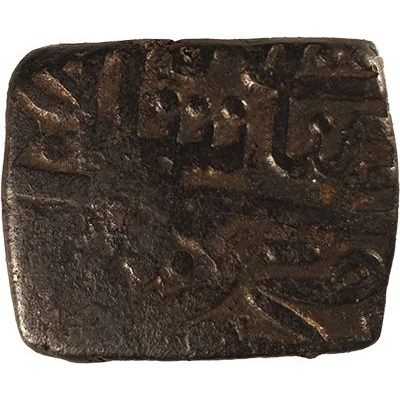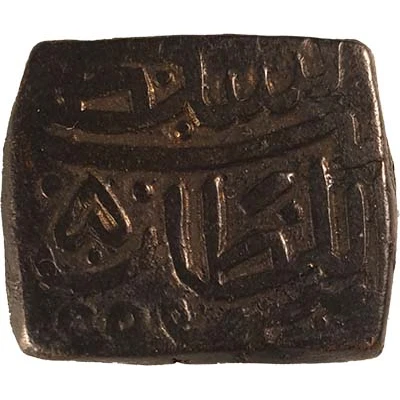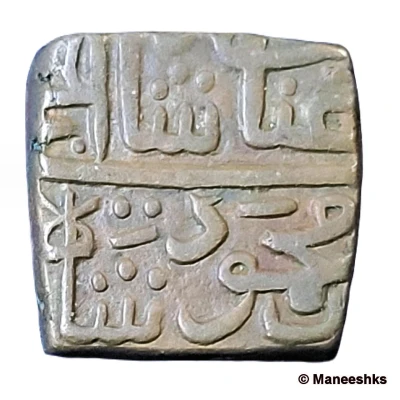
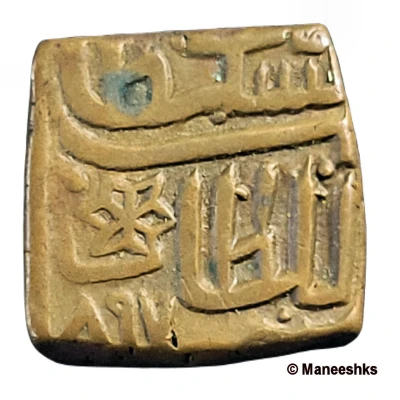

© Maneeshks (CC BY-NC)
1 Falus - Ghiyath Shah
| Copper (80 rati standard) | 8.5 g | - |
| Issuer | Sultanate of Malwa (Indian Sultanates) |
|---|---|
| Type | Standard circulation coin |
| Years | 877-904 (1472-1499) |
| Calendar | Islamic (Hijri) |
| Value | 1 Falus |
| Currency | Tanka (1401-1562) |
| Composition | Copper (80 rati standard) |
| Weight | 8.5 g |
| Size | 19 × 17.45 mm |
| Thickness | 4.2 mm |
| Shape | Square (irregular, Weight varies 8.5-10.2g and dia varies widely) |
| Technique | Hammered |
| Orientation | Variable alignment ↺ |
| Demonetized | Yes |
| Updated | 2024-10-05 |
| Numista | N#370431 |
|---|---|
| Rarity index | 91% |
Reverse
Al-sultan bin al-sultan
Script: Arabic
Edge
Plain
Comment
These coins are of 80 rati.There are many variations of the Reverse with different mint-marks for the different AH years. Some examples are given below:
E.g.1
Obv Rev with markings
E.g. 2
Obv Rev with markings
E.g. 3
Obv Rev with markings
E.g. 4
Same as Obv and Rev shown at top Rev with markings
E.g. 5
Obv Rev with markings
Ghiyath Shah, also known as Ghiyas-ud-Din Shah or Ghiyasuddin, was a Sultan of the Malwa Sultanate in the fifteenth century. The son of his predecessor Mahmud Shah I, he reigned from 1469 to 1500. A military leader before his accession, he was known during his reign for his religious devotion and cultural life. During his reign, the Nimatnama-i-Nasiruddin-Shahi was written and illustrated. His court was known for having over 12,000 women, including entertainers and scholars.
The initial coinage of Ghiyath's reign was round in format but after a few years, possibly from AH 878, bulk of the coins were struck on square flans. Billon coins were no longer issued. It is from his reign that the lengthy series of mint-marks really make their appearance.
Interesting fact
One interesting fact about the 1 Falus coin from the Sultanate of Malwa is that it was made of copper, which was a common material used for coinage during that time period, but it was also made with a unique 80 rati standard, which means that the coin had a specific ratio of copper to other metals, such as silver or gold, that was different from other coins of the time. This unique composition made the coin stand out and is a fascinating aspect of its history.
